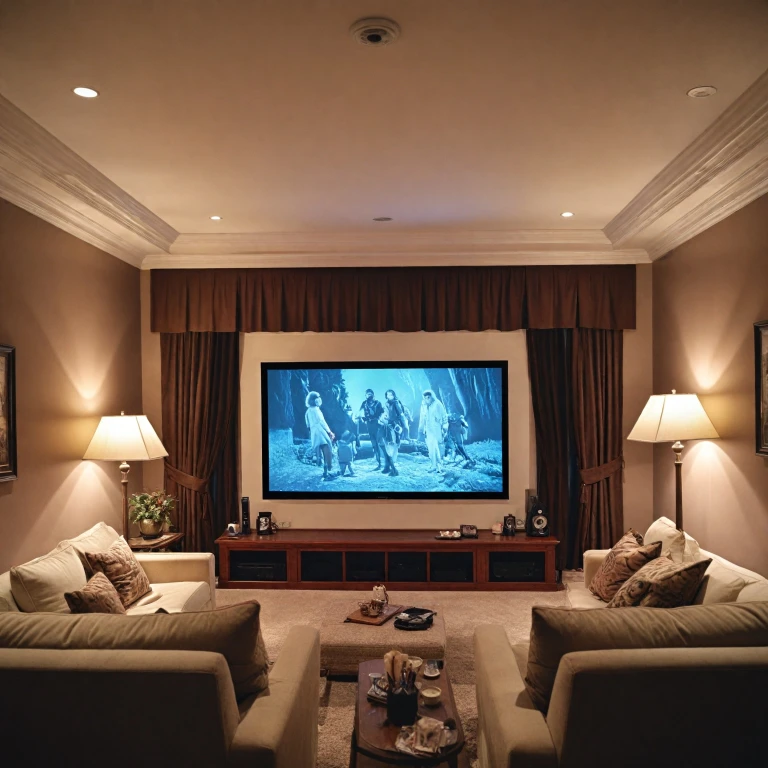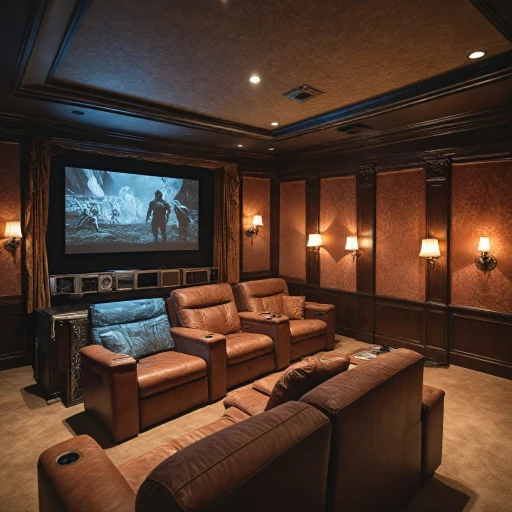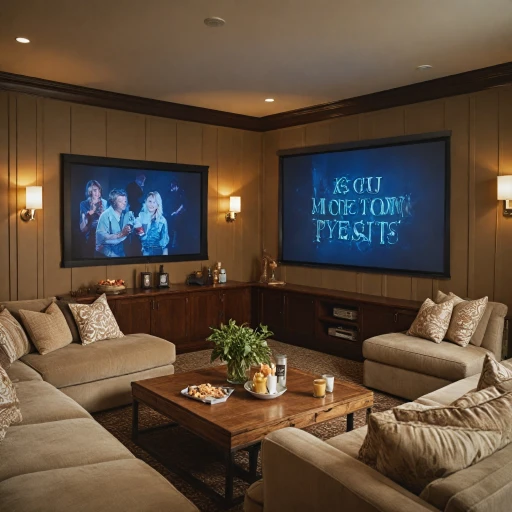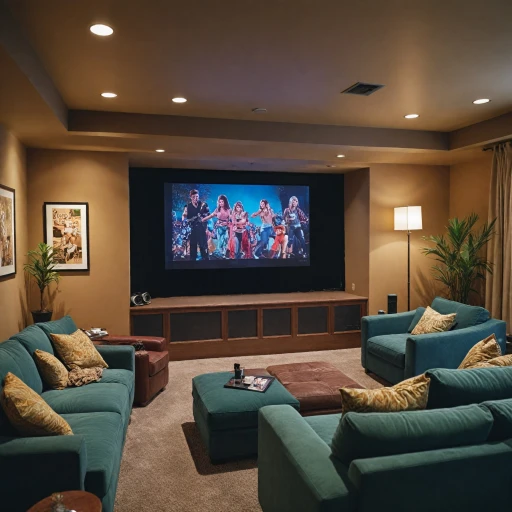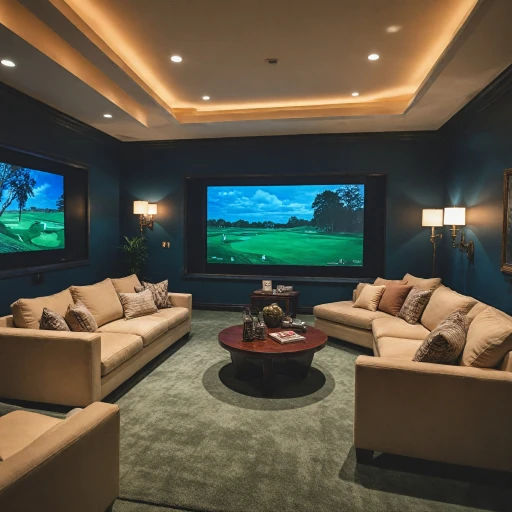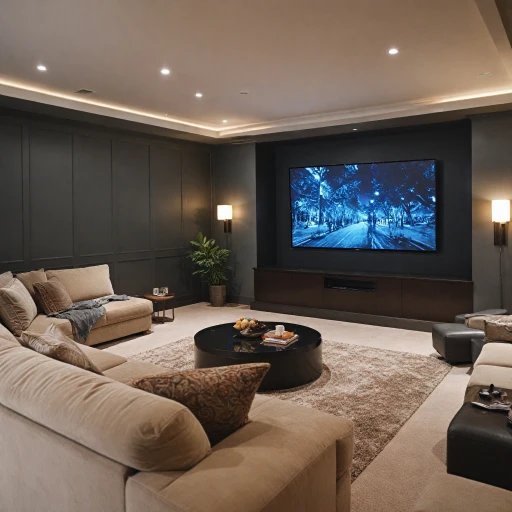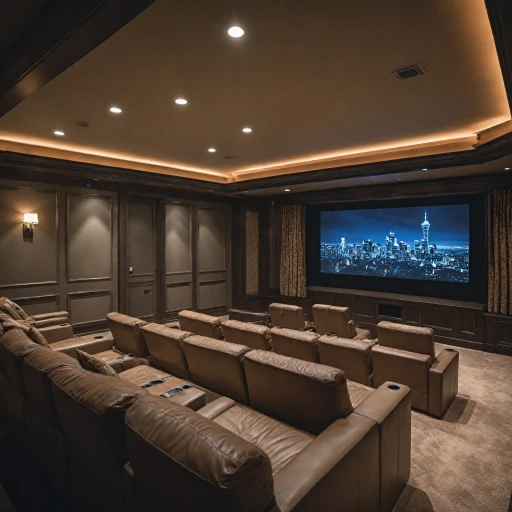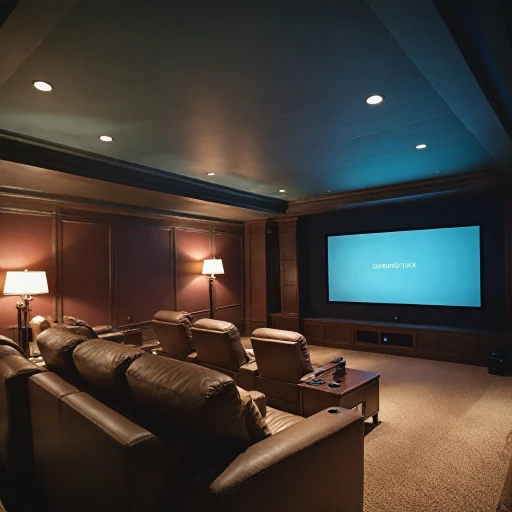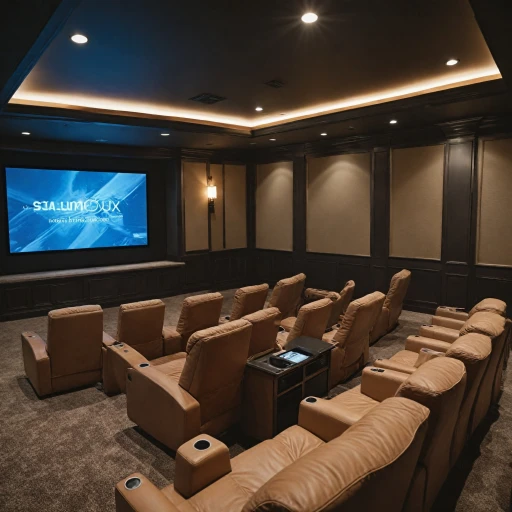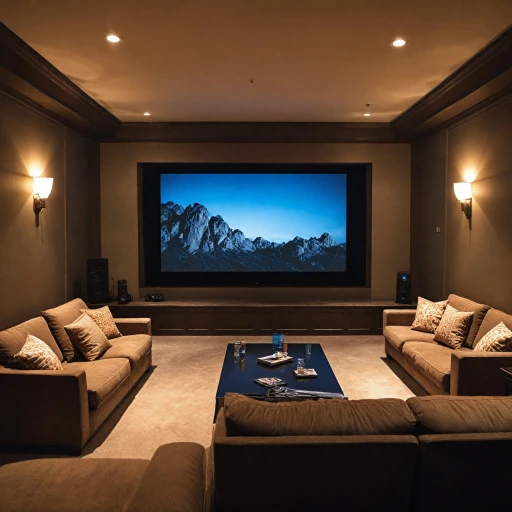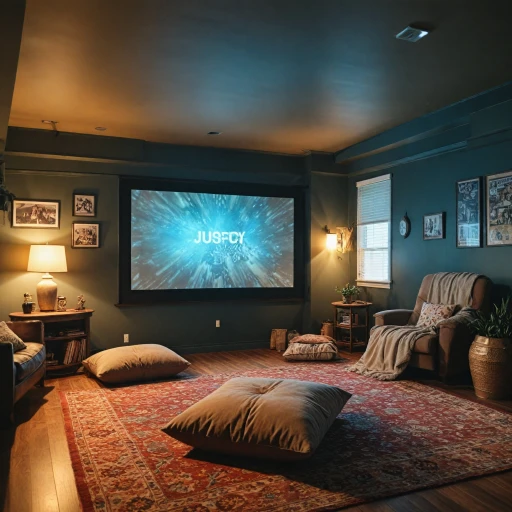
Understanding the Importance of a White Movie Screen
Embracing the White Screen Advantage for Unmatched Visuals
When it comes to setting up a remarkable home theater, the role of a white movie screen cannot be overstated. As a fundamental component of any projection system, a white screen significantly enhances the quality of the visuals by providing a neutral and balanced reflection of light. A white projection screen offers myriad benefits that other screen colors may not. It serves as a clean canvas, ensuring that colors are displayed accurately and images are vibrant. This precise color reproduction is essential for movie enthusiasts seeking an authentic viewing experience. Additionally, the matte finish found on many white screens minimizes glare, further improving picture quality for both indoor and outdoor setups. Moreover, white screens are versatile in terms of projector compatibility, effectively supporting different types of projection—including short throw projectors and ultra short throw options. They can work harmoniously with both front projection and rear projection systems, making them ideal for various environments and setups. With respect to viewing angles, a white screen often provides a more uniform brightness across the entire surface, thereby enhancing the viewing experience for everyone in the room. When paired with a projector that boasts a reasonable gain, the white screen delivers optimum brightness without sacrificing quality whether you're enjoying a film in a compact indoor space or a more spacious outdoor setting. In terms of screen material and design, the choice of a white projection screen can vary based on your personal preferences and needs. Fixed frame setups, portable screens, and even wrinkle free options are available to accommodate different spaces and projector types. Each option comes with its own considerations regarding installation, maintenance, and viewing preferences which can be explored further in subsequent sections. To delve deeper into your options for choosing the perfect projection screen that best fits your home theater needs, consider factors such as material, size and aspect ratio, which will be detailed further in this guide. A well-chosen screen helps deliver that immersive cinematic experience that elevates every viewing session.Choosing the Right Material for Your White Movie Screen
Identifying the Ideal Screen Material
When it comes to creating an immersive home theater experience, selecting the right screen material for your white movie screen is crucial. The type of material you choose impacts the quality of the projected image, its brightness, and overall viewing pleasure. Here are some crucial considerations:
- Material Types: Common screen materials include matte white and fixed frame options, each offering unique properties. A matte white surface is known for its versatility, providing even light diffusion which ensures a consistent picture quality. It's a popular choice for those using both short throw and ultra-short throw projectors.
- Reflective Gain: This parameter measures the brightness of the screen. A gain of 1.0 typically indicates that the screen reflects light uniformly without altering image quality. Some screens have higher gain values, enhancing brightness in rooms with some ambient light, but potentially reducing the viewing angle.
- Weight and Portability: Depending on your setup, you may require a portable or fixed screen. Portable screens are lightweight, making them easy to move, suitable for both indoor and outdoor use. Look for options that offer a wrinkle-free setup.
- Screen Frame: For a permanent setup, a fixed frame screen provides stability and enhanced aesthetics with its sleek design. These are ideal for dedicated home theater spaces.
Understanding these factors can guide you in choosing the perfect screen for your home theater projector, ensuring optimum enjoyment of your movie nights. Consider the compatibility with your projector's throw distance and weight preferences to optimize results.
Size and Aspect Ratio Considerations
Finding the Perfect Fit for Your Viewing Space
When selecting a screen size for your home theater, it is crucial to consider the dimensions and layout of your room. The right size ensures a comfortable viewing experience by allowing everyone to enjoy the show without straining their eyes or necks. Here’s what you need to know:
Determining the Screen Size
- Measure the distance between where the screen will be placed and the seating area. This helps in calculating the optimal screen size for a clear and immersive experience.
- The viewing angle should ideally be between 30 and 40 degrees for a comfortable experience. The optimal distance is often dictated by the size of the screen and the nature of the projector, whether it's a short throw or ultra short throw projector.
- Consider the aspect ratio of your projection screen. The most common aspect ratios are 16:9, ideal for most movies and TV shows, and 4:3, which suits older film formats.
Aspect Ratio Considerations
- Choosing the right frame size for your projector screen can have a substantial impact on your viewing satisfaction. A fixed frame screen offers a wrinkle free surface that is optimal for both indoor and outdoor viewing.
- Matte white screens with a half gain measure refine the balance between brightness and accurate color representation, which is critical for home theater ambiance.
While deciding on Chief mounts can complement your setup, ensure the projector you have chosen matches the screen’s size and capabilities for a seamless viewing experience. Remember, the best screen for your space should align with the projector's specifications and your room's spatial dynamics.
Installation Tips for Optimal Viewing
Installation Tips for a Flawless Viewing Experience
Installing a white movie screen for your home theater can significantly enhance your viewing experience, but achieving optimal results requires a bit more than just setting it up on the first available wall. Here's how you can ensure your screen is perfectly installed for the best projection results. Firstly, consider the location. Whether indoor or outdoor, the placement of your white screen should maximize your projector’s potential. Ensure a direct line of sight without obstructions and account for ambient light, which can affect the white screen's ability to reflect images effectively. For indoor setups, selecting a wall opposite natural light sources is ideal. Outdoor enthusiasts might want to opt for portable screen options that come with a sturdy screen stand, often wrinkle-free, ensuring easy setup and tear-down. Next, account for your projector type. If you have an ultra short throw projector, the distance between the projector and screen can be minimal, which supports the use of a fixed frame screen. Fixed frame screens provide a tight, flat surface enhancing screen material reflection, essential for high-definition viewing. On the other hand, for front projection systems, using a matte white material offers excellent color reproduction while minimizing glare, thanks to its low gain property. Also, the screen height and placement relative to seating are crucial. Aim for a screen size inch that aligns with the general viewer's eye level when seated, ensuring comfort and a wide viewing angle for everyone in the room. This consideration helps maintain the screen’s optimal gain and half gain angles, where the image maintains brightness across the width of the screen. For those installing a projector screen with a frame, make sure the weight lbs of the screen is evenly distributed and securely mounted. This minimizes the risk of falling and maintains the screen's shape over time. Utilizing measurement tools to keep the screen level can prevent projection issues, like aligning your throw projector image onto a crooked screen. Lastly, for easy adjustments and versatile environments, a portable screen might be more fitting. These screens typically offer easy set-up and are designed to adapt to various spaces, be it for impromptu outdoor screenings or quick indoor repositioning. Their lightweight nature often makes them the best product choice for those who frequently change their viewing area. Choosing the correct installation method and placement strategy based on your projector and screen type will help facilitate the crisp and captivating movie-watching experience a white movie screen promises.Maintaining Your White Movie Screen
Maintaining Your Projection Screen for Longevity
Maintaining your projection screen, particularly a white movie screen, is crucial for ensuring a high-quality viewing experience every time. Proper care and maintenance not only preserve the screen's integrity but also enhance its performance over time. Here are some essential tips to help you keep your screen in optimal condition:
- Regular Dusting: Regularly dust your screen using a feather duster or a soft, lint-free cloth. This prevents dust buildup, which can affect the clarity of your projection.
- Cleaning Stains: If there are any marks or stains, use a mild soap solution and a damp cloth. Gently clean the affected area in circular motions to avoid damaging the surface.
- Avoid Harsh Chemicals: Do not use harsh chemicals or abrasive materials on your screen, as they may damage the matte finish of the screen material, affecting the projection quality.
- Check for Wrinkles: To ensure a wrinkle-free surface, regularly inspect your screen for any wrinkles or creases caused by improper installation or storage. A pull tight on the fixed frame can sometimes solve this issue.
- Storage: If you have a portable or outdoor screen, ensure it is stored in a dry, safe place to prevent damage from weather elements or accidental impacts.
- Inspection of Frame and Mount: Regularly inspect the frame and projector screen stand to ensure that the weight is evenly distributed and that the screen remains stable. Loose fittings can affect the viewing angle and screen alignment.
By following these maintenance tips, you can ensure that your screen continues to deliver vibrant, clear images, suitable for both front projection and short throw projectors. Keeping your white screen in top condition will help maintain its gain viewing qualities and support the true colors and contrast your projector is capable of displaying.
Comparing White Movie Screens to Other Screen Colors
Color Choices: White vs. Other Screen Colors
When setting up your home theater, the color of your projection screen plays a crucial role in the quality of your viewing experience. While white screens are the most popular choice, it's worth exploring how they compare to other colors.
Why White Screens Are Preferred
White screens are favored for their ability to reflect light evenly, providing a balanced and natural image. This makes them ideal for both indoor and outdoor settings, where ambient light can vary. The matte white surface is particularly effective in diffusing light, ensuring a wide viewing angle and consistent image quality across the screen.
Comparing with Gray Screens
Gray screens, often referred to as high-contrast screens, are designed to enhance black levels in rooms with some ambient light. While they can improve contrast, they may not offer the same brightness as white screens. This makes them less suitable for ultra short throw projectors, where maximum brightness is essential.
Exploring Black Screens
Black screens are less common but can be beneficial in very bright environments. They absorb more light, reducing reflections and enhancing contrast. However, they require a powerful projector to achieve the same brightness levels as a white screen, which can be a consideration if you're looking for a portable or easy setup.
Choosing the Right Screen for Your Needs
Ultimately, the choice between white and other screen colors depends on your specific needs and environment. If you have a dedicated home theater room with controlled lighting, a white screen is likely your best bet. For multi-purpose rooms or outdoor settings, consider the lighting conditions and how they might affect your projection.
Remember, the material of your screen also plays a significant role in performance. A fixed frame or wrinkle-free screen stand can enhance the overall experience, ensuring your screen remains taut and free from distortions.
